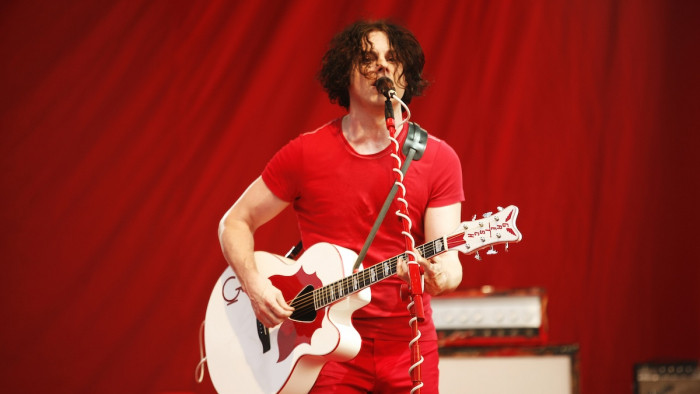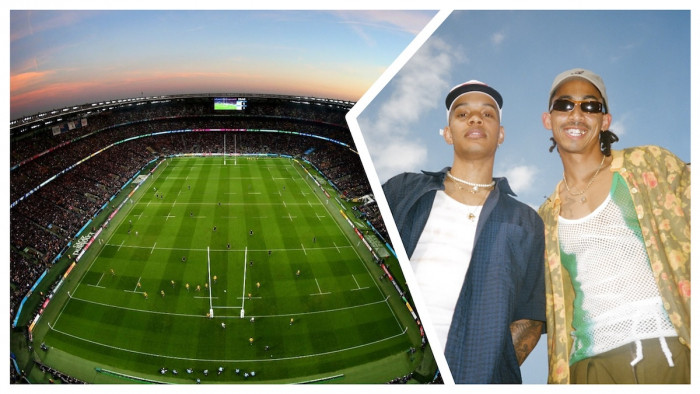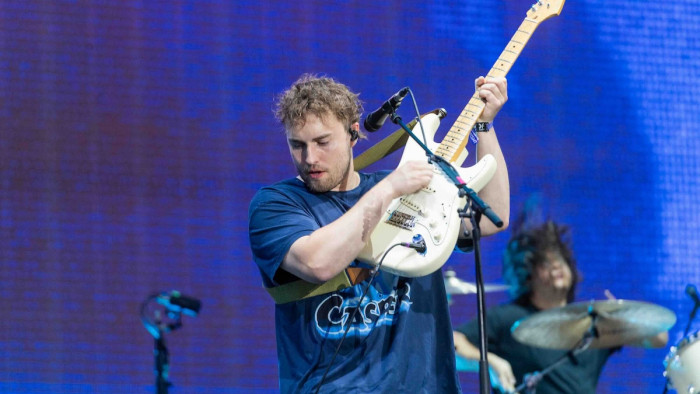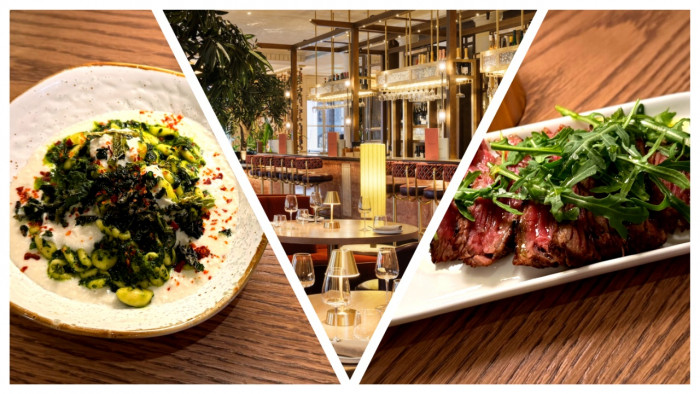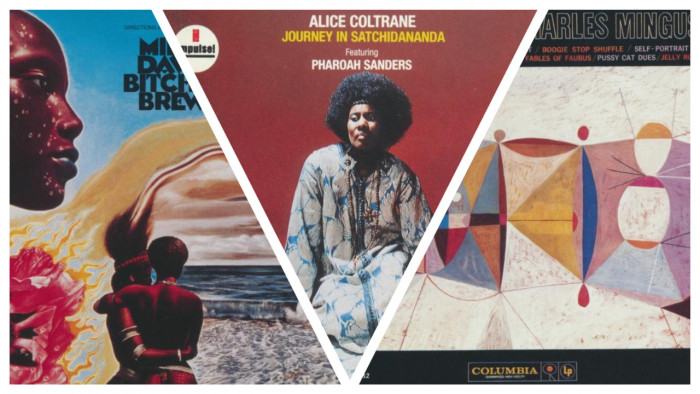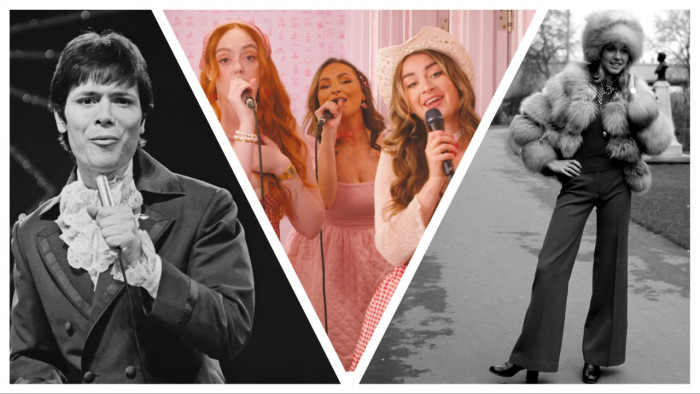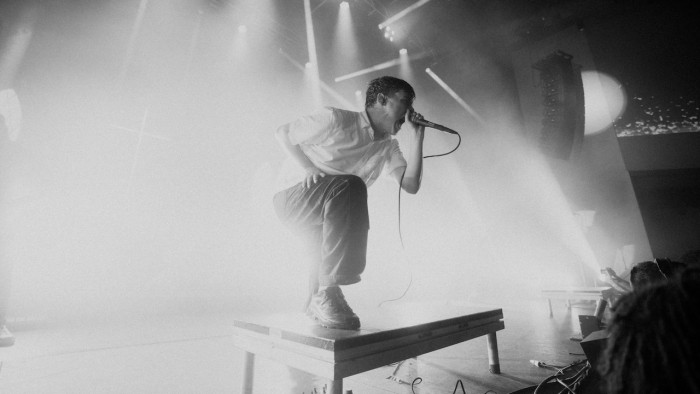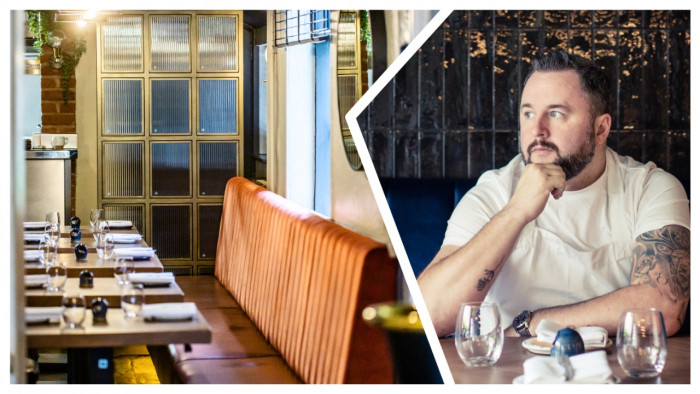Revisiting ‘Drinking in LA’, which is now old enough to legally drink in LA
A deep-dive into Bran Van 3000's '90s cult classic


In 1996, David Foster Wallace’s Infinite Jest told the story of French-Canadian separatists taking over enclaves of the American mainland in connection with a piece of entertainment so ruthlessly compelling it could kill a man.
Less than a year later, life imitated art with the release of Bran Van 3000’s coup de grace ‘Drinking in LA’. Well, sort of.
Early 1997 was a weird time. We were about to find out about DVDs, Teletubbies and Monica Lewinsky for the very first time, though not all in the same context. There were only four terrestrial TV channels, but you could still buy Cadbury’s Marble.
In conclusion, 1997 was a time of contrasts.
It was also the year that Quebec natives Bran Van 3000 released the addictively entertaining ‘Drinking in LA’, and the world has never been the same since.
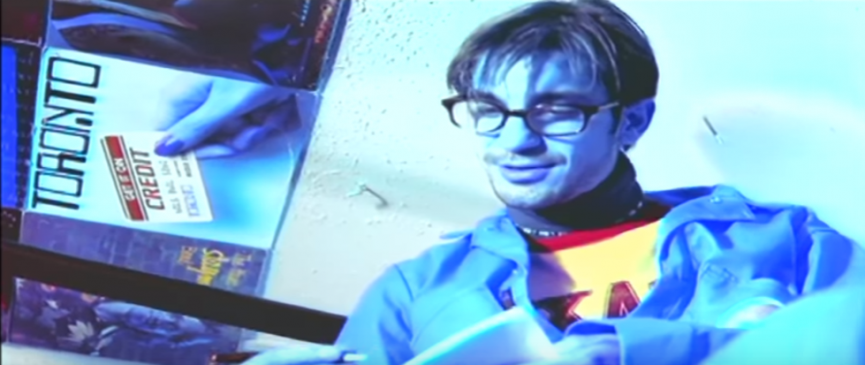
‘Drinking in LA’ ended up being part of that mid-’90s wave of one-hit wonders that also included ‘Breakfast at Tiffanys’, ‘You Get What You Give’ and ‘Steal My Sunshine’, but we didn’t know that at the time.
Back then, we were primed for a group of Canadian upstarts to take over the world, much like their rodent contemporaries Pinky and the Brain. Tragically, it never really happened for either group.
However, while those two cartoon mice at least had a straightforward origin story for the name of their collective, the same can’t be said for Quebec’s finest.
Were they named after a vehicle for transporting cereal? Or a Dutch robot, perhaps? Actually, as it turns out, it was neither. Nor, apparently, was it anything to do with the Swedish spirit Brännvin, despite a very citation neededy Wikipedia claim.
“We just came up with those words and didn’t even know what they meant,” founder James Di Salvio recalled in a 2017 interview with the Toronto Star.
You didn’t know what ‘van’ meant? How much drinking in LA did you do?
Considering they were entering a musical landscape where Babylon Zoo had reached number one and Jamiroquai were a regular top 10 fixture, ‘having a name that made sense’ didn’t need to be too high on anyone’s list of priorities.
And nor, as it turned out, did ‘having a video that made sense’.
The video begins with someone in glasses lying horizontally, followed by four unseen people stepping on a painting of some deer. At least I think they’re meant to be deer – one of them looks a bit like a wolf (the animal in the painting, not the interchangeable Canadians viewed from above).
Now, viral marketing was certainly a thing in the late ‘90s, but perhaps not to the extent we recognise now. Referencing a radio presenter giving away tickets to your band’s gig in your own video – a competition that it’s necessarily impossible to enter for a gig that might not even exist – is some effort to get word out about a band who…you must already know something about, given that you literally need to be listening to them in order to hear the reference.
Maybe it’s supposed to work along the lines of “Bran Van? Never heard of them – what do they sound like?” / ”Well now that you mention it…”
Is that ‘good marketing’? Impossible to tell. But it seems as though one of the quiz questions is “What’s Todd’s favourite cheese?” – if you can get that right then you probably deserve free entry to this possibly mythical gig.
But three tickets? Why not two? Is the use of the number three an attempt at brand recognition (Bran recognition? OK, I’ll stop). At least they commit to it later in the video, with band members drinking Bran Van 3000 label beer – it’s almost like they gave this a ton of thought.
Ah, here we go, the guy with glasses (I think it’s Di Salvio) has woken up, and his glasses have fallen off. That’s what you get when you sleep on a bare mattress underneath a live band humming. It turns out Mike has come over with a ‘script surprise’.
Yes, 1997. When ‘a mafioso story with a twist’ was still an original idea.
Hold on a minute. Did Bran Van 3000 predict The Sopranos?
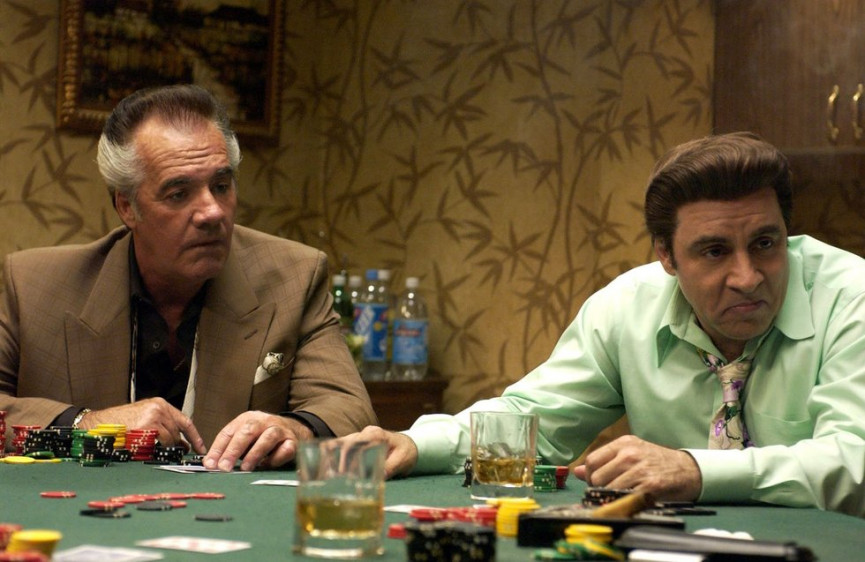
The clues are there.
The opening lyrics of “Woke up again this morning” are one word removed from The Sopranos’ theme.
The record visible 95 seconds into the Bran Van video is by Connie Francis, whose music features in The Sopranos’ pilot.
Drinking in LA is a James Di Salvio creation that begins with a discussion of cheese – in The Sopranos, we see an argument about cheese instigated by Silvio.
And as for that chorus line, “What the hell am I doing drinking in LA at 26?”
Well, that Silvio rant is in Season 2, Episode 6.
Coincidence?
Probably.
It’s pretty clear they wanted to will their fame into lasting forever, which is a lofty ambition for a band with a nonsensical name and a lead single packed with meaningless references.
But they’d clearly done their homework. By getting a woman in a Viking hat to sing midway through – rather than the end, as is customary in opera – they attempted to insert themselves into a time paradox whereby nothing could bring an end to the ubiquity of Bran Van 3000.
The contradiction pushes the band into a regressive loop, occupying that nomansland between VHS and DVD, between Clinton’s first and second terms, between Quebecois film Les Boys and its sequel Les Boys II.
If it doesn’t end when the Viking lady sings, can it ever truly end?

Well they rode the wave long enough to earn an opening slot on Top of the Pops, which – and I’m afraid I can’t offer definitive proof here – probably contains the last recorded use of the word ‘bupkis’ on British television (or is it ‘butkis’, an acceptable error given the likely lack of Quebecois French-Yiddish dictionaries).
It’s still unashamedly ‘90s, however, right down to the Gin ‘n’ Juice references and – well – the entire visual spectacle from start to finish.
White pillars on a stage feels very mid-’90s at least, as does wearing a hat indoors when you’re not Jason Mraz or a Men’s Right’s Activist (hang on, was it actually Jason MRAz? Never mind, there’s no time to dwell on that).
Another particularly ‘90s aspect was the refusal to ‘do’ genre. It would have been possible to listen to a 30-second clip from their album Glee (from which ‘Drinking in LA’ was taken) and consider it hip-hop, electronica, retro-pop or lounge music. This should be a bad thing yet somehow seems to work, perhaps due to a quirk of the time period in which it was released.
One of the other album tracks to earn itself a video, chart smash* ‘Afrodiziak’, begins with a screen within a screen within the video itself, putting the ‘meta’ in ‘could be mistaken for every conceivable genre other than metal’. Look, I’ve pre-emptively distracted you from the pixelated doves and the elephants fucking, so at least thank me for that.
*a peak of number 25 in Sweden; failed to chart elsewhere
The reviews for Glee, while often positive, paint a picture of a band not just trying to run before they can walk, but trying to post a competitive time over the 110m hurdles before they can walk.
“Di Salvio and his cohorts show no regard for convention, which can result in wild, intoxicating juxtapositions and beats. It can also result in a mess, which unfortunately happens on about half of the album,” reads an AllMusic write-up.
Meanwhile, writing for The Village Voice, Robert Christgau said of the album: “Whether it's constructed or just strung together, its flat moments are spritzed by its highs, which include sexy pomo new jack hip-hop, girl-pop Slade/Quiet Riot cover, faux-country faux-fable, numerous humorous middle-class layabouts, several minibricolages, and a sarcastic indictment of capitalism.” If that sentence was an effort to mimic the record itself in its construction, it probably counts as a successful one.
Of course, with the passage of time more reference points have emerged, allowing Noisey’s Emma Garland to note: “Without Stéphane Moraille's vocals imbuing it with a sense of urgency and professionalism, it sounds a bit like something Linkin Park would have made in GCSE music.”
The thing is, that’s in no way a criticism.
‘Drinking in LA’ carries a rare triple-threat: it is somehow before its time, of its time and ahead of its time all at once. Its component parts could easily be ported into a soundtrack for films set anywhere from 1979 to 2048.
It captured the transition from the experimental mumbled shouts of second-wave Britpop while simultaneously pre-empting that glorious Eurodance summer dominated by Gala, Sash! and Dario G. But maybe, ultimately, they flew too close to the sun, imposing a level of cool that might have been replicable if it was deliberate or even vaguely planned, but which was anything but.
Still, it has undoubtedly aged better than the most high-profile cover of the song.
Some might say no cover could do justice to the improvised blend of differing sounds and genres that made up the original. And they’d be right.
That didn’t stop The Twang from trying, though. No, we’re not going to attempt to explain it beyond assuming they like (or at the very least remember) the song and can put the words in order without much effort.
Within that context, a reference to To Wong Foo, Thanks for Everything! Julie Newmar – a 1995 film featuring RuPaul as a character named ‘Rachel Tensions’ – probably didn’t land as well in 2010 Birmingham as it will have done anywhere in 1997.
The subtle changes – ‘stolen gin’ rather than ‘juice and gin’ and ‘Quinton’ rather than ‘Venice’ – don’t land quite as well as The Ataris’ addition of a Black Flag reference in their iconic ‘The Boys of Summer’ cover, and all in all it seems, well… flat.
‘Drinking in LA’ doesn’t work if it’s polished – it needs the slapdash nature of the original to really click, and devoting any time to cleaning it up only serves to remove what made it work so well.
That Twang cover will have been the first time plenty of people thought about Bran Van 3000 for more than a decade. But not the last.
Three albums followed Glee – the most recent being 2010’s The Garden – though few of the LPs or singles got much airtime outside Canada.
So that was that for us in the UK, until we got a surprise reminder at the most unlikely of places: the 2011 Eurovision Song Contest.
Yes, it was the year Jedward represented Ireland and Blue led the UK to its most recent top-half finish, but the stand-out entry came from Greece.
Loucas Yiorkas performed the Greek entry ‘Watch My Dance’, but he was joined on stage by none other than Stereo Mike. Could it be the same mystery man whose name features at the start of ‘Drinking in LA’?
As it turns out… no. I mean, the main clue comes from the fact that it seems to be a female voice who says “Hi, my name is Stereo Mike”, but why rule anything out?
Mike ‘Stereo Mike’ Exarchos was born in 1978, meaning he will have been in his late teens when ‘Drinking in LA’ was released.
Probably too early in his life for him to have been involved in the recording (though with the mish-mash of styles and individuals who knows), but certainly not too early for him to have taken his stage name from those opening bars.
Exarchos is now working as a lecturer at the University of Westminster, according to his website, and *Extremely Mark Lamarr voice* was still recording new music as recently as 2014.
Naturally, I did what anyone in my position would: I dropped him an email to find out his connection to Bran Van 3000, if any.
He is yet to reply.
In fairness, polishing off this story neatly would do a disservice to Bran Van 3000’s origins.
So this is how it ends: not with a bang, but with a failure to track down the source of a mysterious piece of ‘entertainment’.
Time for you to go back and re-read that first paragraph.
(Images: YouTube/Rex Features)
